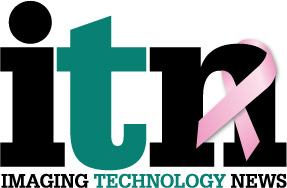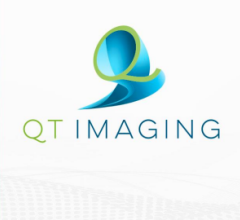
ITN is proud to go pink this month in an effort to help bring attention to Breast Cancer Awareness Month. This disease all too often hits home with the imaging and radiation oncology markets.
According to the American Cancer Society (ACS), an estimated 232,340 new cases of invasive breast cancer will be diagnosed among women in the United States during 2013, and about 2,240 new cases are expected in men. Following skin cancer, breast cancer is the most frequently
diagnosed cancer in women. ACS estimates that 40,030 breast cancer deaths (39,620 women, 410 men) are expected in 2013, and says it is the second leading cause of cancer death in women, with lung cancer taking the morbid lead. Fortunately we have seen a decrease in death rates from breast cancer, thanks in part to the progress made in increasing awareness among women, early detection, and improved diagnosis and treatment options. Our industry is doing its part to spread this awareness.
The topic of breast density has recently been making headlines, and for good reason. The FDA has added consideration of a regulatory amendment to address breast density reporting that could mean standardized nationwide notification in the letter women receive after their mammograms. A Breast Density Reporting amendment to the Mammography Quality Standards Act (MQSA) is scheduled as a notice of proposed rulemaking in December. According to statements issued, the “FDA is proposing to amend its regulations governing mammography. The amendments would update the regulations issued under the Mammography Quality Standards Act of 1992. FDA is taking this action to address changes in mammography technology and mammography processes, such as breast density reporting, that have occurred since the regulations were published in 1997.”
Currently, 12 states have enacted breast density inform laws, and it is estimated that about 40 percent of American women live in states with mandatory notification. However, the 12 individually authored laws yield inconsistent state-to-state density notification. Breast density inform grassroots advocates have sought a single standard through federal regulation or legislation. “MQSA regulatory amendment progress is welcomed news, ” said JoAnn Pushkin, DENSE NY (Density Education National Survivors’ Effort) founder, whose efforts led to the regulatory amendment consideration. “For those patient/advocates fighting for breast density inform laws, an MQSA amendment to require patient density notification would mean one less battle waged by these champions who will now have time to focus on their own health. Nationwide breast density notification is one step closer to becoming a reality.”
Digital tomosynthesis is another hot issue. According to a new study published online in the journal Radiology, it is an effective tool for reducing the recall rate in breast cancer screening. Digital breast tomosynthesis has shown promise at reducing recall rates, particularly in younger women and in those with dense breast tissue. In the study, Brian M. Haas, M.D., and Liane E. Philpotts, M.D., both of Yale University School of Medicine, compared screening recall rates and cancer detection rates in two groups of women: those who received conventional digital mammography alone and those who had tomosynthesis in addition to mammography. According to the published study, of the 13,158 patients who underwent screening mammography, 6,100 received tomosynthesis. The cancer detection rate was 5.7 per 1,000 in patients receiving tomosynthesis, compared with 5.2 per 1,000 in patients receiving mammography alone.
While there is still no cure for cancer, continuing to advance detection technology and spread awareness of the detection methods available is helping to make its mark on this disease. The world of imaging and radiation oncology has come a long way — and clinicians such as yourself are helping to take it even farther in the future.


 December 04, 2025
December 04, 2025 








